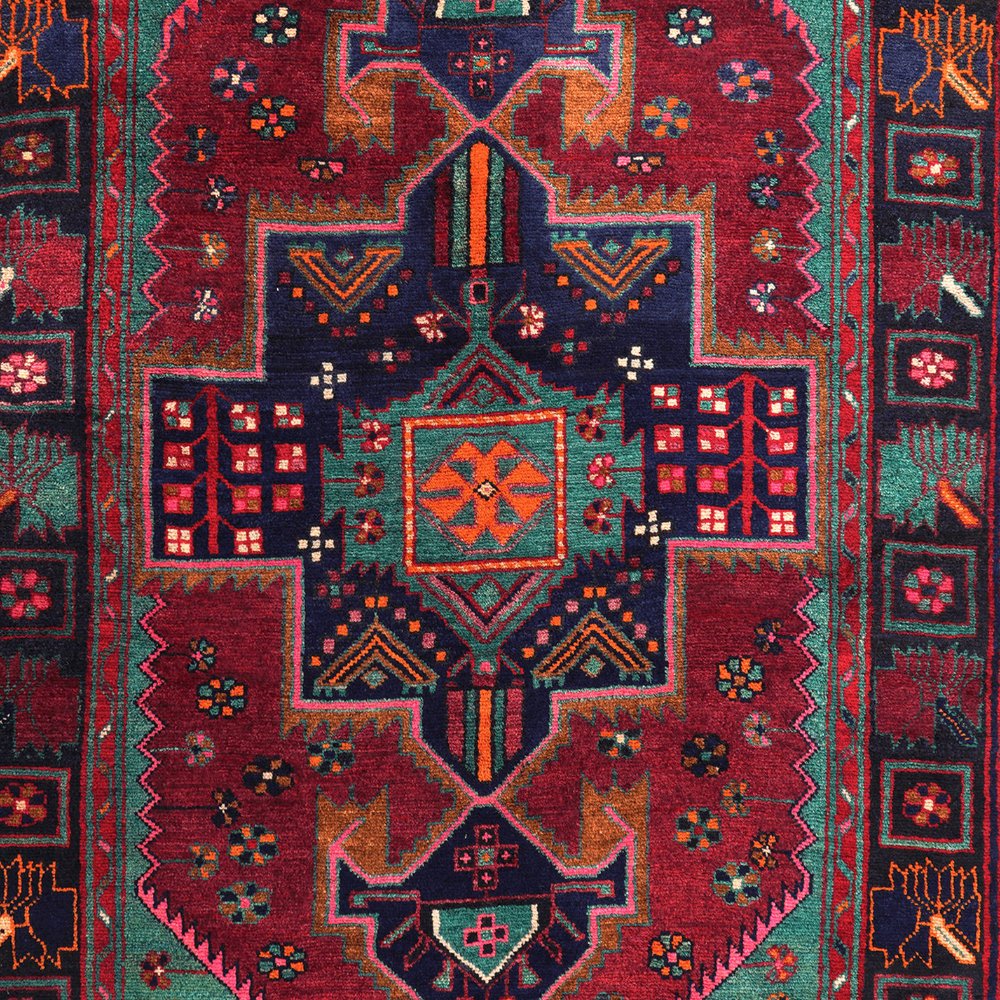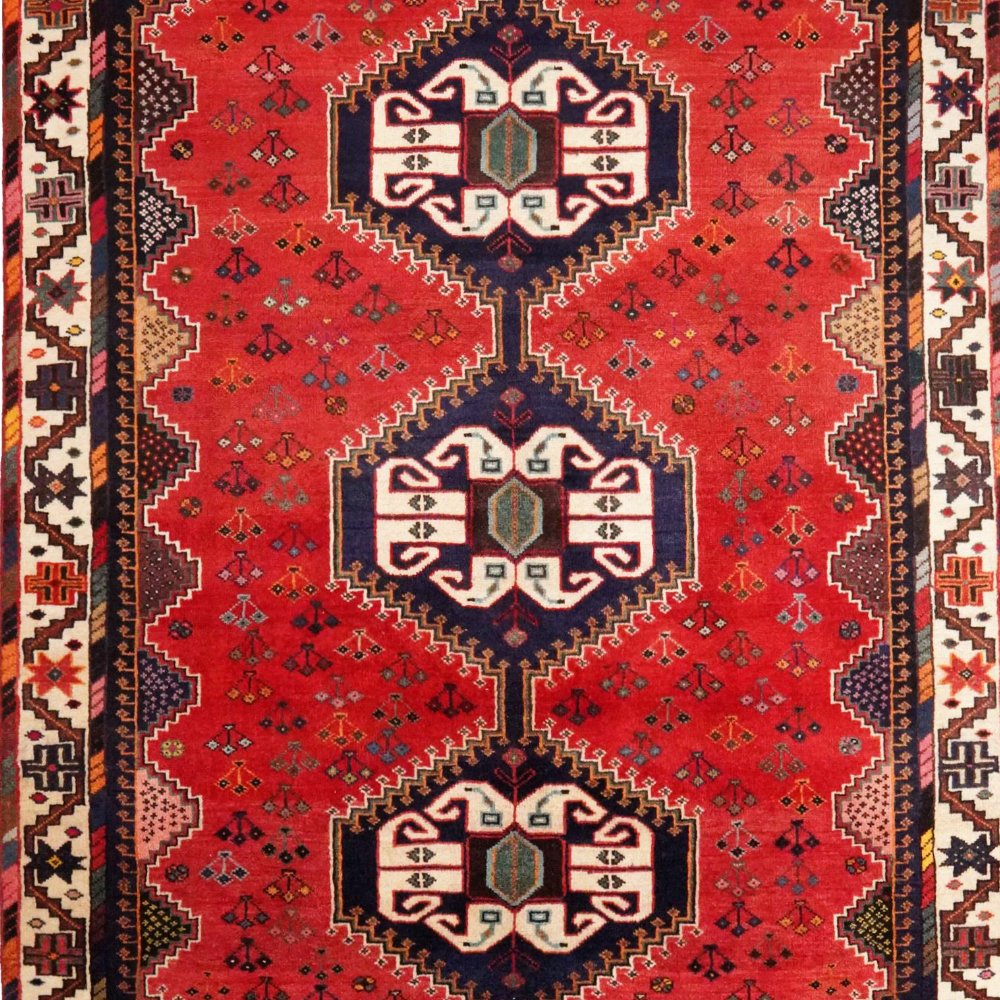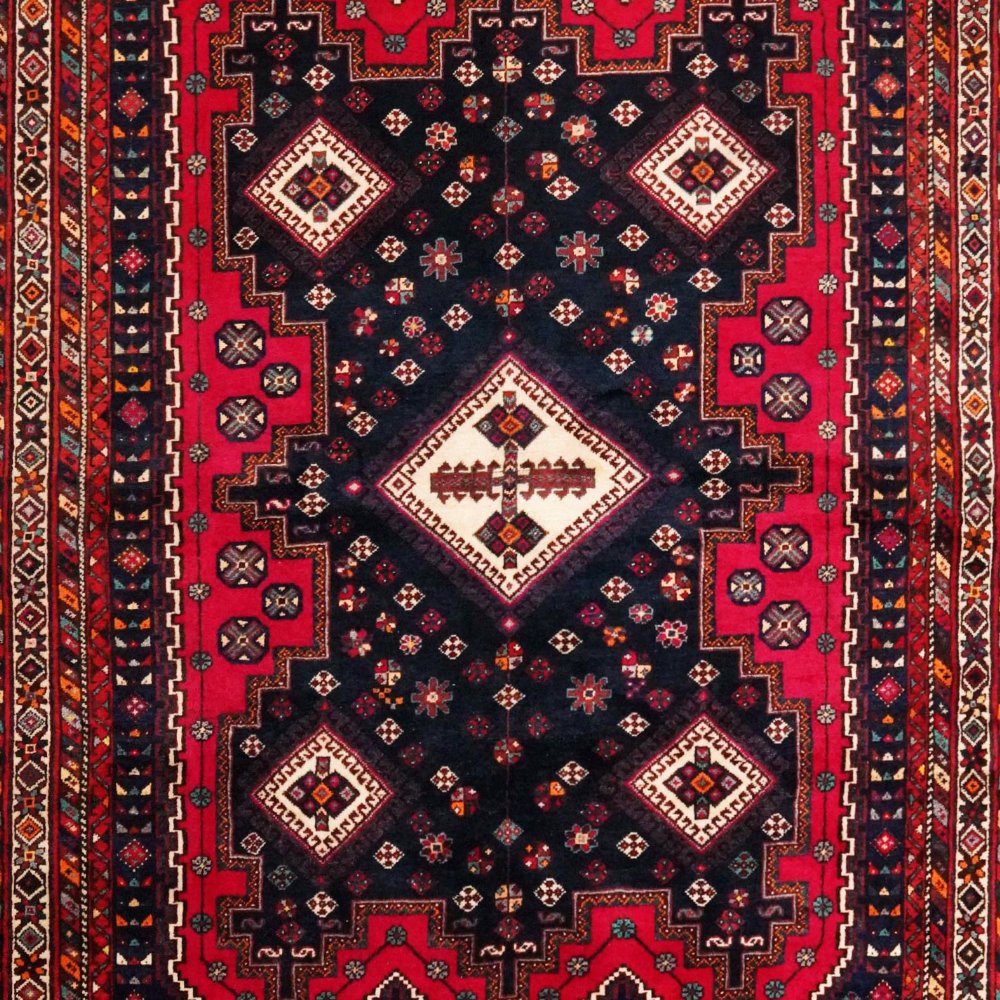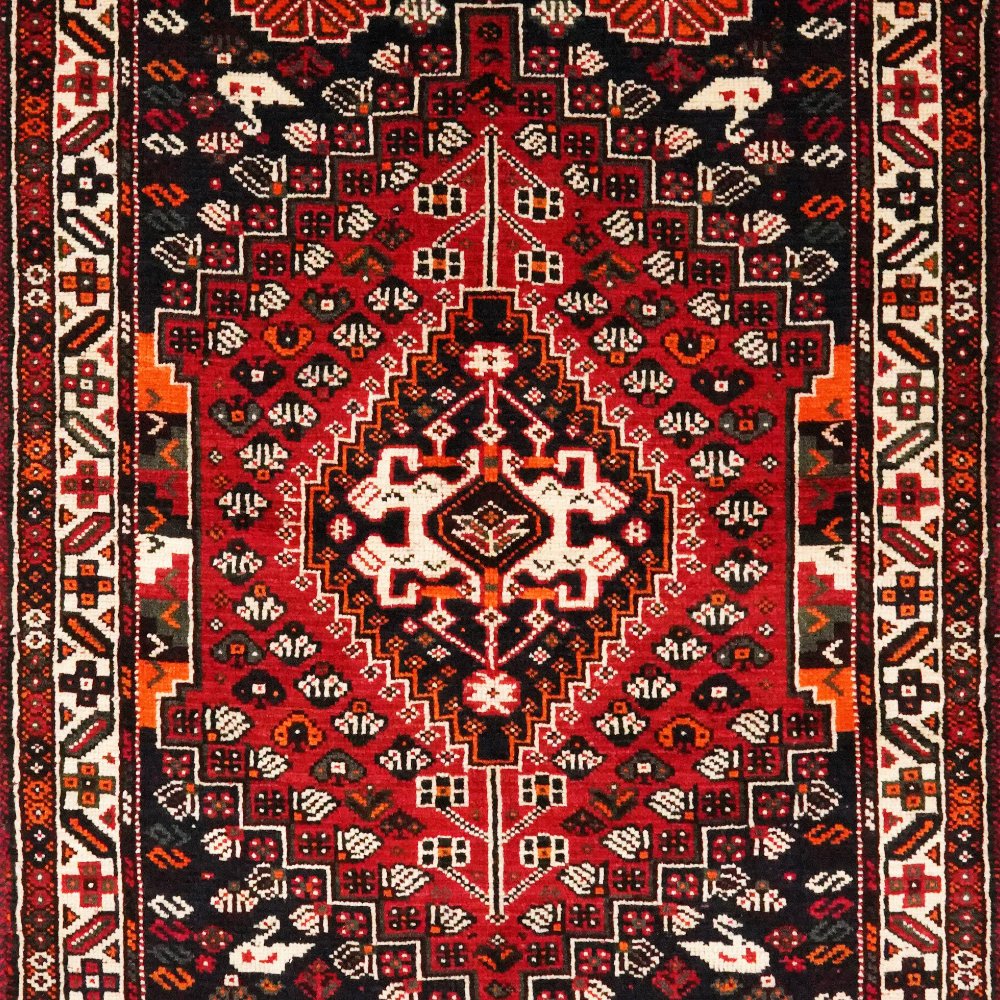Lori
Lori is originally a nomadic tribe living in the Southwest and West of Iran. Today many of them are settled in villages and even towns. Until today, they still produce rugs according to traditional methods. Thus the rugs preserve their original character. Lori rugs appear in the most significant variations in terms of style, but most of them appear in a very geometric design. Dominant colours are dark red, blue, green, violet, black and brown.
Shop Lori →Gashgai
The Gashgai are Turkish speaking nomad tribes, who mainly live in the province of Fars, especially around the city of Shiraz in the southwest of Iran. They produce Rugs, Kelim, bags, ribbons and decorative cloths for their daily use. Usually, the rugs have a typical reddish brown ground colour. The Gashgai take their daily environment as inspiration for their designs. Thus the motifs include stylized human figures, animals like horses and birds, as well as trees, flowers etc.. The nomads do not follow a given design or template, they knot according to their memory and personal taste. Often, the rugs have a medallion in the middle, which is then repeated in the corners. The Gashgai are known for high quality nomadic rugs.
Shop Gashgai →
Afshar
The Afshar are a Turkish speaking tribe, which migrated from north western Iran to the southeast of Iran around the city Kerman in the 16th century. Their rugs are known for mostly geometrical patterns. Strong reds, dark blues and even cream tones are often seen in Afshar rugs. The most common pattern consists of a large stretched centre piece which is phasing out in several squared medallions. Some people say, that this motif might symbolize the skin of animal, which is normally hung up by the nomads to be stretched out. They mix patterns show influences of their own traditions and designs from the city of Kerman. Although geometric motifs dominate, floral patterns can occur.
Shop Afshar →
Turkmen
Turkmen rugs are made by the Turkish speaking nomadic eponymous tribes, who live in the north-eastern part of Iran. Each tribe of the Turkmen has their own pattern, but all of them come in octagonal shapes, which are called "Gül". The dominant colour palette is red, especially very dark and almost brown shades.
Shop Turkmen →
Belutch
Close to the Iranian-Afghan border live different nomadic tribes of different origin which are called the Belutch. They live from agriculture, rug production as well as sheep, goat and camel breeding. The Belutch rugs are closely related to Afghan and Turkmen rugs. They typically have wide borders, often in goat hair, and short woolen pile in dark brown and red, rust, blue, black and brown. A Belutch rug is characterized by all-over geometric patterns, stylized flowers and motifs like “Gul” - a distinctive octagonal pattern. The rugs have a high quality and are mostly dense, thin, and have a sloppy texture. They convey a feeling of genuine nomadic craftsmanship. They are usually made in smaller sizes and with a lively pattern. Belutch are often used as prayer rugs.
Shop Belutch →
Shiraz
The city of Shiraz is situated in the province of Fars. Shiraz' rich culture of endless gardens, the tombs of poets and the ruins of Persepolis, is one of Irans most important contemporary testimonies. Furthermore, Shiraz is an essential centre for nomad rugs. Different tribes of nomads, mainly Gashgai, live around the city of Shiraz. The rugs of these nomads are often traded as Shiraz rugs on the bazaar. The traditional design is a hexagon decorated with hooks, placed on a ground with smaller elements such as animals, plants, people and geometric designs, which are scattered throughout the background. Typical for a Shiraz rug is, that the warp which can be seen as fringes on both ends of the rug, is usually made out of wool, not cotton as in most other rugs. Shiraz often occurs in warmer colours as red, brown, dark blue and black.
Shop Shiraz →






